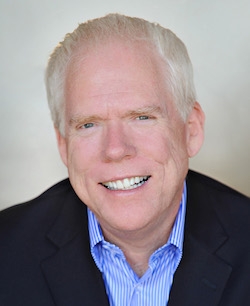
The SEMANTiCS 2015 team is happy to announce that Mike Doane will join the conference and talk about one of the most exciting, but also sensitive ongoing semantics projects. He is currently advising public bodies in the US how to integrate semantics into their video data, which is generated through public surveillance activities.
Get to know Mike and his views on the development of semantic technologies!
You are a lecturer at the University of Washinghton and a business owner in the semantic technology sector. How effective is the knowledge transfer in the field of Web 3.0?
Mike Doane: The field is changing so rapidly, that it's important to not only create solutions for today's client, but also plan for the future by training new information technologists. I'm working to do both, and it's handy that at the same time I work on more cutting edge projects for clients, I can train graduate students in the field to carry on the work for the next version of the semantic web. It's exciting to get new ideas all along the way, and the combination of teaching for the University of Washington and working for Gravity Zero provides this opportunity.
You have extensive experience at the intersection of information architecture and content strategy. What are the biggest challenges companies face when working with content? How can semantic technologies support an effective content lifecycle?
Mike Doane: A big challenge for companies is that so much information is created -- even within one group or division -- that is never made available to a larger audience, most companies simply give up on trying to maintain a practice of enterprise knowledge sharing. With the advent of semantic technologies, the burden of figuring out how to share information is no longer placed on each employee. Instead, providing relevant information to specific audiences can be delivered by semantic systems, rather than having a great deal of human intervention. Making employees aware of not just 'what's out there' but 'what's relevant' is what I think new semantic technologies can provide.
How would you describe the semantic technology market? Which software suites would you recommend?
Mike Doane: The maturity of the semantic marketplace is finally catching up with a lot of the hype. In the US, semantic technology is finally moving out of academics and into the workplace. This is exciting, because we've been teaching these ideas to students for years, but now those graduates in the workplace are able to take those learnings and using tools like PoolParty are able to make real advances for information findability and relationships on both internal and external websites. It feels good to see all these brilliant ideas in the semantic space finally make it to the business world.
Thank you for the interview. We are looking forward to your speech at SEMANTiCS 2015.